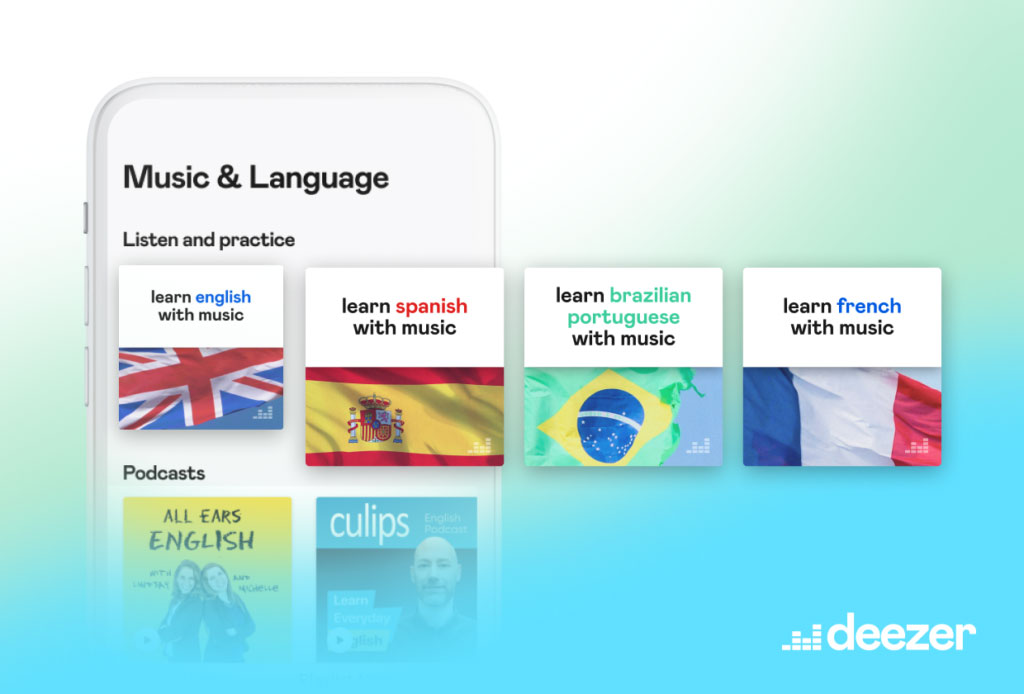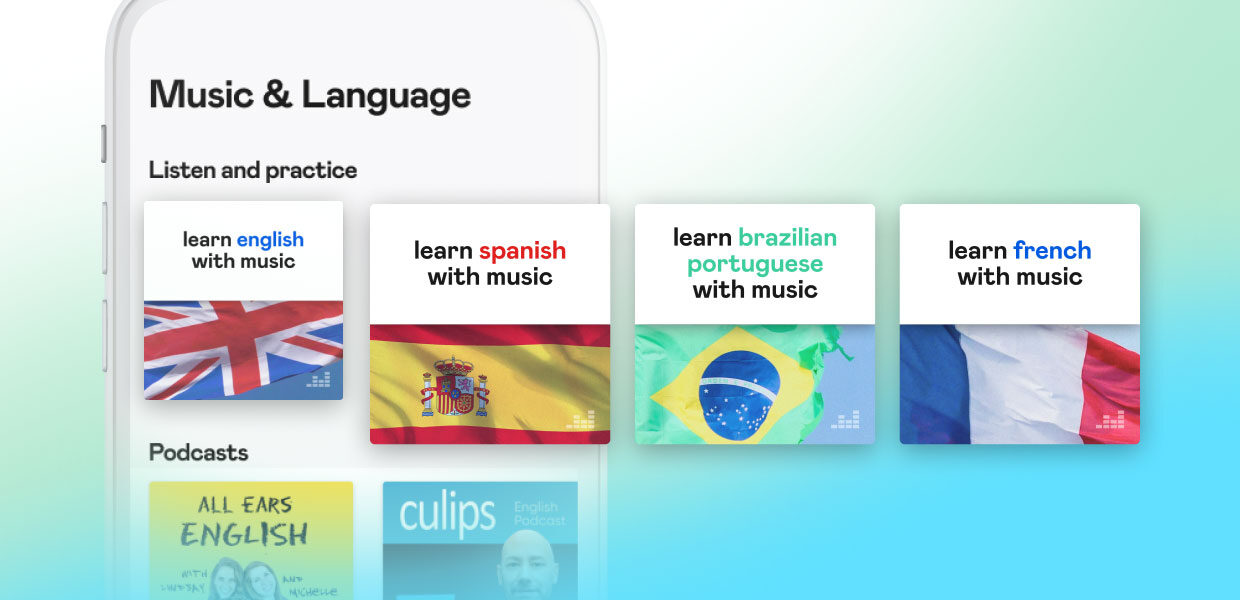New research explores the connection between music and learning languages
- 88% of Americans think listening to music helps when trying to master a new language
- Global audio streaming service Deezer surveyed over 12,000 people across six countries to find out how people are using music to learn a new language
- Working with language and music expert Susanna Zaraysky, Deezer has launched a “Music & Language” channel featuring curated playlists of the best tracks to up your language learning game

Looking to learn a new language? If you’re thinking of lessons, you should try plugging into your playlists as well. New research by global audio streaming service Deezer found that 88% of Americans think listening to music helps when trying to master a new language. US respondents found that the biggest benefits include improved overall understanding of the language (28%), a bigger vocab range (28%) and better recall (30%).
Deezer worked with language and music expert Susanna Zaraysky and surveyed 12,000 people across six countries* to look at how music can help us learn new languages. Turns out, it’s something that a lot of us are already doing. Over half (52%) of the Americans who took part in the survey use music as a tool for learning new languages. Mexicans and Brazilians use music to learn languages the most (81% and 76%), but only 48% of Germans can say the same.
Even passive listening could be having an impact. You might surprise yourself with what you already know from your favorite tracks. 74% of Americans agreed that they had learnt at least some new words from listening to foreign language songs. This is good news for the increasing number of listeners tuning in to foreign music. Deezer’s streaming data shows that more people are listening to songs in Spanish over the last five years. The language saw its biggest stream growth of 751% in Brazil, with a 37% increase in the UK. The amount of streams of French language tracks also grew by 283% in the US in the same period.
Given that we’re all stuck at home this year, music can be an easy way to satisfy our wanderlust. According to Zaraysky, “we have a drive to learn more about the culture behind our favorite tracks and you’re more likely to want to learn if you’re interested. It’s one of the reasons why music makes an ideal tool for language learning”. 46% of American respondents agreed, saying that they’re most interested in other cultures when listening to foreign-language music.
Music is also more colloquial than an ordinary textbook and allows us to get closer to popular culture. Zaraysky adds “Music offers invaluable insight into a foreign lifestyle and culture that can help your conversational language abilities.” 66% of American respondents agreed that they had learned at least a few slang or swear words from foreign language music. Mexican listeners have learnt the most (85%) and British listeners, the least (56%).
Our curiosity for other cultures doesn’t stop there. Almost half of the American respondents (40%) are interested in love and romance when it comes to listening to foreign music. Mexican people are the most likely (23% said yes) to use foreign lyrics as a pick-up line. Brazilians are the second most likely (21% said yes), and Americans are in the third position (14% said yes), with French being the least likely (83% said no). Interestingly, men are most likely to put this into practice. One fifth of American men (20%) say they’ve used foreign song lyrics as a pick-up line, compared to just 8% of women.
For those thinking beyond their next pick-up line, music offers a more engaging way for us to teach the next generation. An overwhelming 87% of American adults said that they would consider playing music to help kids learn a foreign language. The most popular languages to learn, in order of popularity, are Spanish, English, French, Italian and German. “Starting early matters. From a young age, we learn songs by heart. Songs are emotional. And when emotions are involved, it makes memories stickier,” says Zaraysky.
Children’s music might be the most obvious choice (53%), but American parents are also turning to hip-hop. Nearly a third (30%) of American respondents said they would play hip-hop to teach their kids a new language. Parents in Mexico love this genre the most and are almost twice as likely (64%) to play it for their little ones. Zaraysky comments “Hip-hop might seem like an unlikely genre for language learning, but it can actually work well. Hip-hop tracks can be highly lyrical, with a clear story and prominent vocals, which is perfect for absorbing new vocabulary. If kids dance, clap or tap along to the music they are learning, this makes it even more fun and easier for them. Moving along to the beat helps the brain process speech.”
To help people on their quest to become multilingual, Deezer’s team of music editors have created a series of bespoke playlists for people looking to improve their language skills. Each playlist features different tracks to suit learners needs, from vocab building to pronunciation practice and listeners can press the mic icon on each track to see the lyrics. Zaraysky says: “Music should be an integral part of the language learning process. Not only is it fun, but it’s effective. Songs are the entry into the sounds of another language, and can assist in every aspect of language learning, from grammatical patterns to perfect pronunciation. ” The playlists are available to download on Deezer’s “Music & Language” channel here.
“The consumer research reveals that people are very open to learning new languages through music. But finding the right tracks can be hard. That’s why our editors have curated a dedicated channel with playlists to help you learn, as well a selection of language related podcasts. So put on your headphones, press play and follow the lyrics. It’s one of the best ways to jump start your language journey,” said Aurelien Herault, Chief Data and Research Officer at Deezer.
If you want a musical boost for your language learning, check out our “Music & Language” channel here. You’ll find a series of playlists that our editors have designed based on feedback from Susanna Zaraysky. Each playlist is structured specifically to help you learn. Tracks 1-5 will help you build your vocabulary, while 6-10 will assist you with pronunciation. The 11th to the 15th track has been selected to help you pick up some local slang, while the final five tracks focus on cultural meanings.
To explore a new country and language outside of your own, don’t forget to check out Deezer’s Country Selector. Our new feature gives you the flexibility to view any local content from over 180 countries in its native language.







